Newly discovered Asian treasures to be auctioned with Dreweatts
A rare embroidered Imperial apricot ground twelve symbols dragon robe, jifu, 19h century. Estimated Price: £8,000 - £10,000. Photo courtesy Dreweatts.
DONNINGTON PRIORY.- Dreweatts present the first Chinese Ceramics & Asian Works of Art sale of 2015. Featuring 170 lots from Yuan through Ming, Qing and the other Imperial dynasties to 20th century, the auction features textiles, ceramics, works of art and artworks from a number of private collections. The auction will be held on Tuesday 19th May 2015 at Dreweatts’ Donnington Priory.
Mark Newstead, Head of Asian and European Ceramics and Works of Art at Dreweatts said; “The latest Chinese Ceramics & Asian Works of Art sale at Dreweatts builds on the strength of former auctions to offer pieces from private collections to buyers worldwide. With works spanning eight centuries of Asian art history the auction appeals to buyers of all tastes."
The jewel from one family’s private collection, discovered by Dr Benedetta Mottino and leading the works of art lots is a large pair of cloisonné enamel double crane censers measuring 150cm high. As birds with a long life span, cranes are associated with longevity, immortality and wisdom in Chinese tradition, particularly following the rise of Daoism from the Han dynasty. The pair has been in a family collection for a number of generations and is estimated to achieve £6,000-8,000 [Lot 27].
A pair of cloisonné enamel double crane censers. Estimated Price: £6,000 - £8,000. Photo courtesy Dreweatts
Each group finely modelled as a large crane and young standing on an elaborate champlevé and cloisonné enamel rockwork- shaped pedestals interspersed with blooming flowers, standing on tall legs detailed with cylindrical bands, the smaller crane with one leg slightly bent, their long necks naturalistically curved, the taller crane grasping a double-peach sprig in its pointed beak, the bodies and feathers realistically detailed in black and white enamels within gilded borders, with the red crests wings covering the hollow body, 150cm high 清 御制掐丝珐琅双鹤香炉一对 成交价 Cranes are an important component of the Chinese decorative system which is based on the use of images whose auspicious symbolism was conveyed by their intrinsic qualities and the homophonic nature of the Chinese language. The underlying principle to such a system was the belief that all natural phenomena and things on Earth were an expression of Heaven's will towards the human conduct. Auspicious events, therefore, were reproduced in writing or images in China and believed to function just like their physical counterpart and thus perpetuate their benign effects. In this way, buildings, tombs, gardens, paintings, ceramic, lacquer, metal wares and textiles were decorated with flowers, birds, animals and other auspicious symbols. Cranes have a long-lived tradition of connection with immortality beliefs in China. As birds with a long life span, they were associated with longevity, immortality and wisdom, especially following the rise of Daoism from the Han dynasty. We may recall the flying cranes appearing on the domed ceiling of the tomb of Wang Chuzhi of the Five Dynasties and the high-ranking tombs of the Liao, and the frequent occurrence of cranes in relation to the miraculous rebirth as immortal beings in vernacular literature dating from the 12th century. Cranes were also praised for their ability to dance to music and described in the Ruiying tu of the sixth century BC as gathering around the legendary Yellow Emperor as he practiced music on Kunlun mountains, accompanying scholars as they played music in Tang and Song paintings and appearing in official celebrations and gatherings. Accompanying the rites, music provided a moral and physical definition to a dynastic rule. In this context, therefore, cranes were interpreted as heavenly indicators of the emperor's benevolence and sage governance. It may not be incidental that the word for crane is in fact homophone with the Chinese word for harmony he. Cranes became even more closely related to a successful reign/emperor during the prosperous period of Northern Song Emperor Huizong (r. AD 1100-1126) as the search for auspicious images increased and the Xuanhe ruilan ce, comprising some thousand volumes recording auspicious sightings, was compiled. During this time, cranes appeared as pennants and employed as part of the imperial regalia that accompanied many official affairs on the court. Cranes also appeared in many Song court paintings. Cranes above Kaifeng, in particular, has been attributed to or commissioned by Emperor Huizong. The work depicts twenty cranes appearing in flight above the Golden Gate to the Imperial Palace on the 3rd day of the Lantern Festival - believed to be 26th February 1126) as if sent by Heaven to sanction and celebrate one of the most glorious days of Huizong's reign when the court was at its highest splendour and the emperor was united with his subjects as they wished him longevity for the year to come.
Another important work of art is a bronze model of a tiger from Warring States-Western Han style. The tiger is one of the oldest and most revered animals in Chinese history; a symbol of peace, tigers were associated with a successful reign and were highly regarded as protectors and guardians due to their power strength and courage [Lot 8, est. £3,000-5,000].
A bronze model of a tiger, Warring States-Western Han style. Estimated Price: £3,000 - £5,000. Photo courtesy Dreweatts.
powerfully cast, prowling forward with raised head, quasi-triangular ears, eyes alert and pug- nosed snout that enhances the visual effect of its wide open mouth, ferociously baring its teeth, in an aggressive attitude, inlaid with gold and silver designs of clouds, spirals, geometrical and fur-like patterns, all on a rich background of maroon-patinated bronze, the neck incised with two character inscription, 13.2cm long, with 19th century hardwood collector s fitted box 仿战国西汉 错金银青铜石虎形 TIGERS IN CHINESE ART The tiger is one of the oldest and most revered animals in Chinese history. According to Han mythology, the tiger was one of the Four symbols for the cardinal points, representing the seven constellations of the west and the autumn season. In conjunction with the Green Dragon of the West, the Vermillion Bird of the South and the Black Tortoise of the North, the tiger positioned the burial within the spatial-temporal features of the universe. In literature, the Queen Mother of the Western paradise, one of the most important deities of the Han Daoist pantheon, is described as having tiger s teeth and tail. In burials, the deity sat on a throne decorated with a tiger and a dragon, the opposing yin-yang forces moving the universe, which the Queen Mother transcended. Also underscoring auspicious symbolism for peace, tigers were associated with a successful reign, and were highly regarded as protectors and guardians for their power, strength and courage. The character hu , 虎 , for tiger, is in fact homophone with hu , 护 , meaning protection, which must have clearly been sought to protect the tomb occupants against the malign influences they may encounter in their afterlife. In conjunction with other real and imaginary creatures, tigers also decorated the base of Han miniaturised mountainous landscape, a visual metaphor for the barriers of human morality that must be crossed whilst transitioning to immortality. (..) Having transcended sacred mountains, one will gain supernatural powers, controlling the wind and rain, and finally reach to Heaven, the Abode of the Celestial Emperor, mentioned the Masters of Huainan , Huainanzi , 淮南子 , a philosophical classic compiled in the second century BC, referring to the tortuous journey through a winding obstacle-laden landscape, which one must embark on, in search of the elixir of eternal life. During the Han dynasty, the soul was expected to encounter many dangers on its journey to paradise, including malignant ghosts, spirits, and ferocious beasts. Mountains were highly praised in China for their high peaks, close connections with heaven, the ability to produce water, life-giving element, and their many cavities, where immortals were thought to inhabit. The Huainanzi , for instance , refers to the mountain as a Chilly Wind Peak climbed by people who achieved deathlessness and became gods. Mountains were also conceptualised as treacherous realms for their inhabitants had unpredictable, supernatural, powers and were thus considered as potentially malignant. If someone entered the mountain possessed of no magical arts, he will certainly suffer harm. Some will fall victim to acute diseases or be wounded by weapons (...) Sometimes the man will encounter tigers, wolves, and poisonous insects. One cannot enter the mountain lightly ! mentions the Master embracing simplicity, Baopuzi , 抱樸子 , compiled between the third and fourth century AD. Clearly, in addition to serving as the gateways to the land of immortality, mountains were also considered as the borderlands through which the soul must pass after death. A comparable tiger was included in Eskenazi's 1998 exhibition, published in Giuseppe Eskenazi, 1998, Animals and Animal Designs in Chinese Art , New York.
A 19th century rare embroidered Imperial apricot ground, twelve symbols dragon robe leads the textile works in the sale. Imperial dragon robes were worn during festive holidays by the emperor and as such were adorned with the twelve symbols of Imperial sovereignty arranged in groups; the sun, the moon, the stars, the dragon, and the flowery fowl, which are depicted on the upper garment, the temple-cup, the aquatic grass, the flames, the grain of rice, the hatchet, and the symbol of distinction, which are embroidered on the lower garment [Lot 71, est. £8,000-10,000].
A rare embroidered Imperial apricot ground twelve symbols dragon robe, jifu, 19h century. Estimated Price: £8,000 - £10,000. Photo courtesy Dreweatts.
Finely worked in satin stitches in shades of blue, green, red aubergine and ochre and couched gold threads with nine five-clawed contorted dragons writhing amidst vaporous ruyi clouds interspersed with bats and shou medallions and the twelve symbols of Imperial sovereignty arranged in three groups of four, beginning with the sun, moon, constellations and mountains around the neck; the axe head, fu symbol, paired dragons and pheasants around the upper body of the robe. The water weed, pairs of sacrificial vessels, fire and grain above the terrestrial diagram and lishui stripe at the hem, all interspersed with the Eight Buddhist Symbols on both the front and back of the apricot ground, with matching dark blue cuffs and collar worked with further dragons amid bats, clouds and waves, 192cm wide and 148cm high 清十九世纪 橙色地十二章纹吉服
Another important robe in the textiles section of the sale is a coral ground silk Tibetan chuba, tailored from 18th century Chinese silk brocade. Yuan, Ming and Qing emperors patronised important Tibetan Buddhist monasteries and abbots with lavish gifts like this silk robe. Rarely appearing at auction, this example is estimated at £3,000-5,000 [Lot 76].
A coral ground silk Tibetan chuba, tailored from 18th century Chinese kesi. Estimated Price: £3,000 - £5,000. Photo courtesy Dreweatts.
Featuring eight five-claw dragons, three on the front, three on the back, and one on each sleeve, floating in the cosmic setting represented by the mountains (the earth), waves (the sea), and the clouds (the sky), amid vaporous clouds depicted in the five auspicious colours of white, blue, black, red and yellow, representing, respectively, the five elements of Metal, Wood, Water, Fire and Earth in the Chinese philosophy of the universe 西藏 十八世纪 御制橙地丝织五爪龙纹袍 Yuan, Ming and Qing emperors patronised important Tibetan Buddhist monasteries and abbots with lavish gifts, including silks. Tributes sent to religious leaders by the Chinese emperors were annotated in the inventories of the monasteries from at least the 15th century. In an effort to control the Northern and Western regions, the Ming court bestowed gifts and titles on Tibetan religious leaders and sanctioned trade in luxury gifts. Tibet never produced silk, which was always imported from China for exclusive use by the Tibetans or originally intended for the Chinese court. Often, these court textiles were re-tailored in Tibetan styles or re-used to decorate temple buildings, departing, therefore, from their original schemes and symbolic meanings. Until the present century, many of the leading Tibetan Buddhist lamas, such as the Dalai and Panchen Lamas, wore elaborately decorated robes, such as the present one, on state occasions.
For reference see Vollmer, John (2004), Silks for Thrones and Altars: Chinese Costumes and Textiles ; Linrothe, Robert (2004), Paradise and Plumage: Chinese Connections in Tibetan Arhat Painting.
Bridging the gap from textiles to artworks is a 17th–18th century rare Tibetan thangka (painting on cotton or silk) of Shantirakshita, the ‘Guardian of Peace’ a renowned 8th century Indian Buddhist Brahim and abbot of Nalanda [Lot 132, est. £2,000-3,000].
A rare Tibetan thangka of Shantirakshita, 17th-18th century. Estimated Price: £2,000 - £3,000. Photo courtesy Dreweatts.
seated on cushion over a throne, wearing rich red and gold, flowing robes and distinctive red hat, holding the Buddhist scriptures, set in a palace, surrounded by retreat and teaching scenes, monks and figures within pavilions, all painted against a lush mountainous landscape, bearing Tibetan inscriptions in gold, opaque pigments and gold on cloth, 53cm high and 37cm wide 西藏 十七/十八世纪 寂护大师唐卡
Already attracting attention in the ceramics section of the sale is a Republican Period vase amusingly painted, with a figure hiding and peeking out from inside a pagoda and a seated dog at the entrance to a palace garden estimated at £800-1,200 [Lot 122] a good 19th century porcelain screen mounted in a hardwood frame of large size measuring 93cm high overall [Lot 113, est. £800-1,200]
A Chinese famille rose landscape vase , early 20th century. Estimated Price: £800 - £1,200. Photo courtesy Dreweatts.
well painted with a scene of formal palace gardens with pavillions enclosed within a wall, the waisted neck and base richly embellished with scrollling foliage on a red ground, blue enamelled key-fret borders, pseudo iron-red seal Qianlong seal mark, 28cm high 民国 人物图花卉瓶 乾隆六字
A Chinese porcelain mounted table screen, 19th century. Estimated Price: £800 - £1,200. Photo courtesy Dreweatts.
painted in famille rose enamels with figures at leisure in a walled garden, with pavillions and mountains beyond, 93cm overall height 清十九世纪 彩粉人物庭院屏

/https%3A%2F%2Fprofilepics.canalblog.com%2Fprofilepics%2F1%2F0%2F100183.jpg)
/https%3A%2F%2Fstorage.canalblog.com%2F03%2F02%2F119589%2F96711876_o.jpg)
/https%3A%2F%2Fstorage.canalblog.com%2F11%2F31%2F119589%2F94773502_o.jpg)
/https%3A%2F%2Fstorage.canalblog.com%2F20%2F83%2F119589%2F94772815_o.jpg)
/https%3A%2F%2Fstorage.canalblog.com%2F26%2F72%2F119589%2F75604929_o.jpg)
/https%3A%2F%2Fstorage.canalblog.com%2F59%2F60%2F119589%2F26458628_o.jpg)




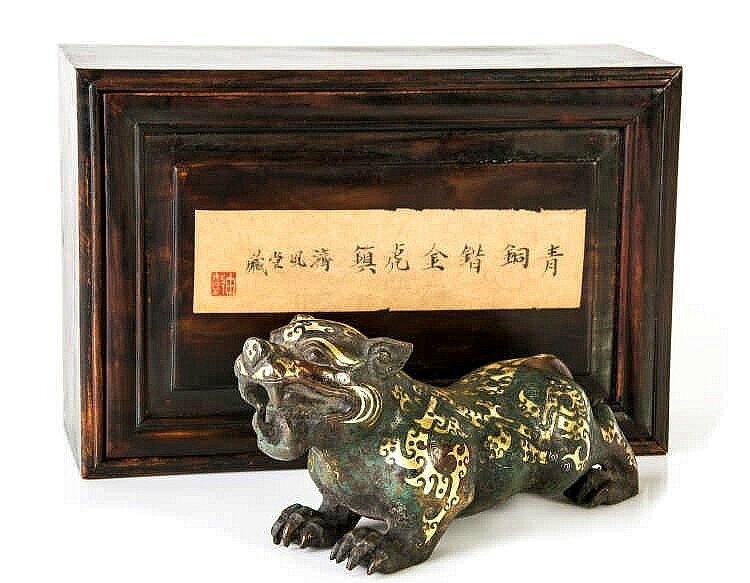

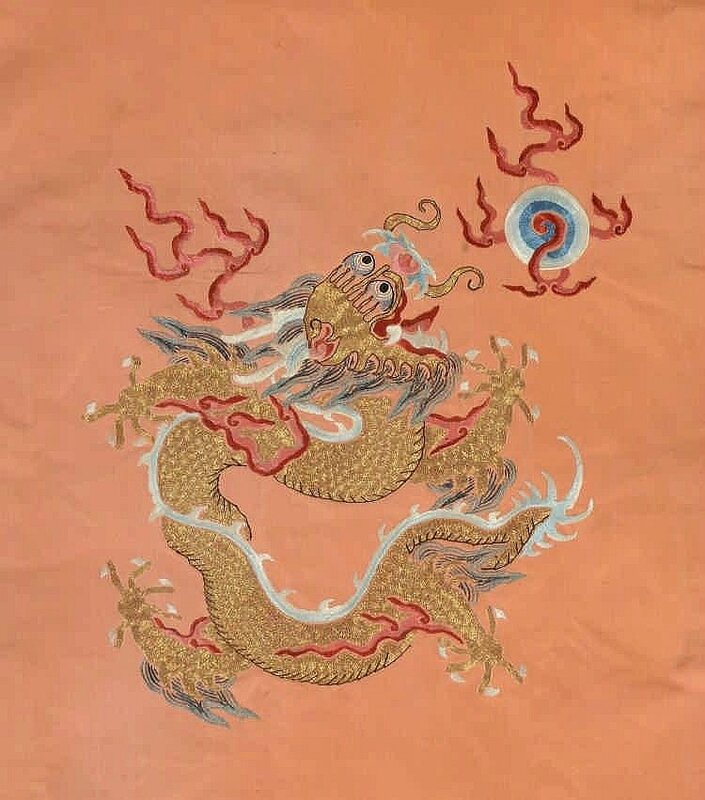

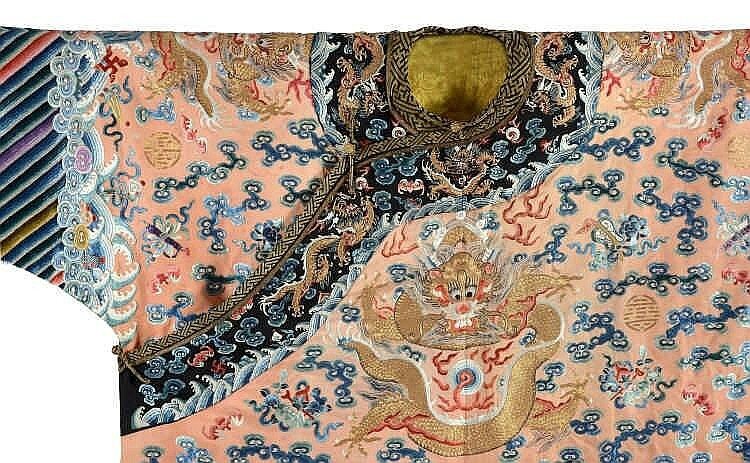

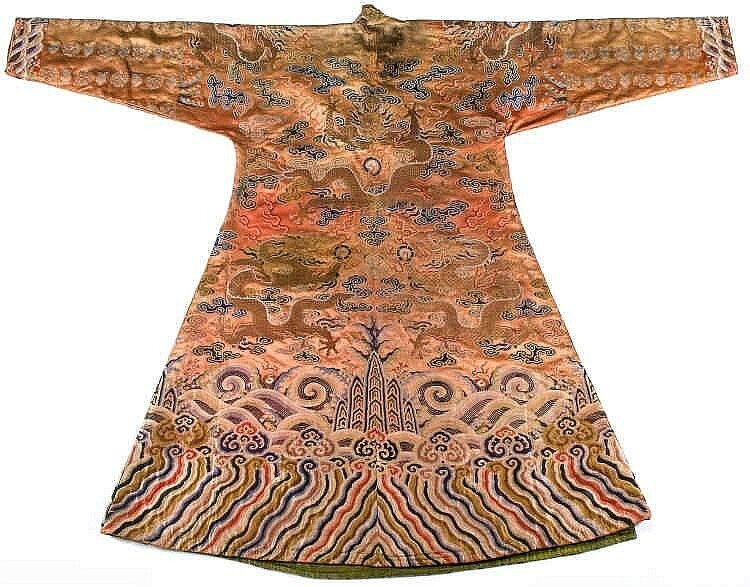

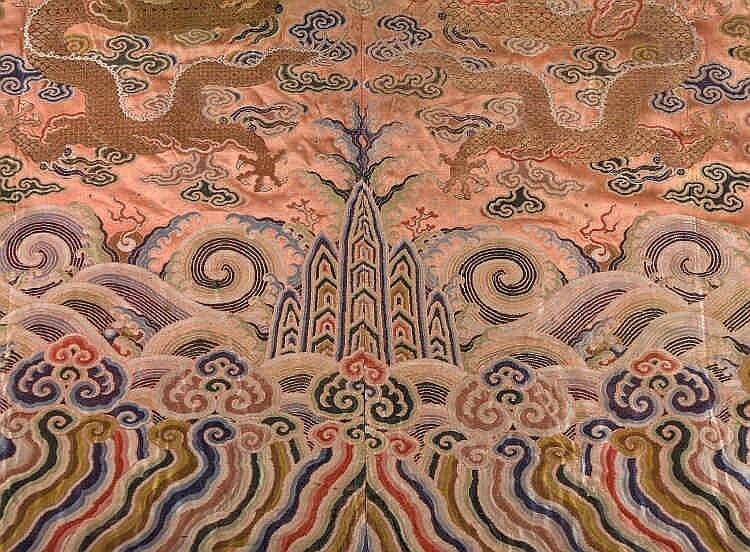







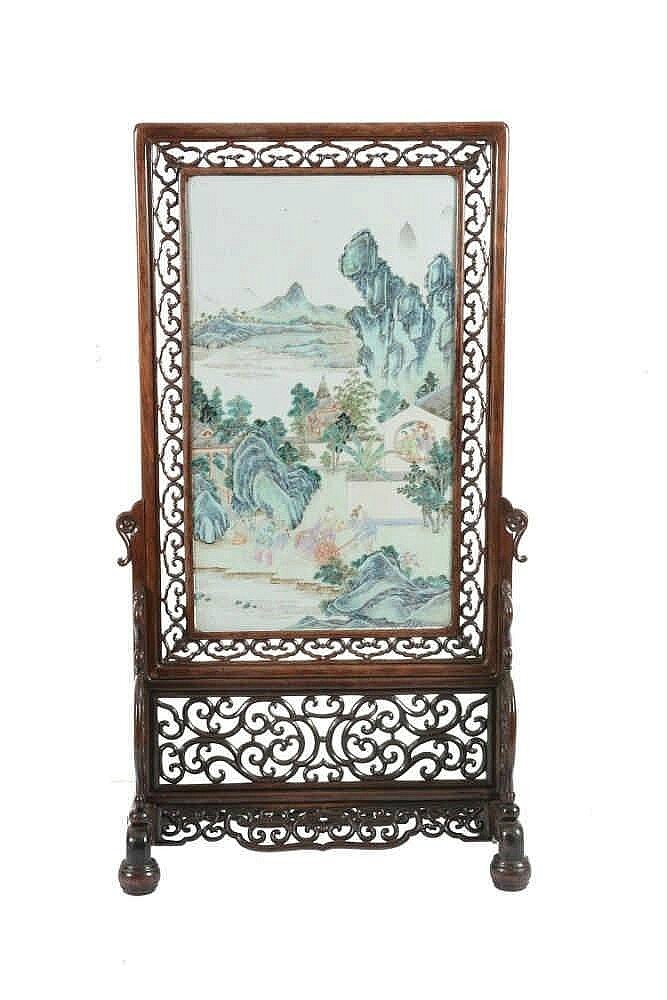


/http%3A%2F%2Fstorage.canalblog.com%2F42%2F78%2F119589%2F128481918_o.jpg)
/http%3A%2F%2Fstorage.canalblog.com%2F37%2F46%2F119589%2F117809003_o.jpg)
/http%3A%2F%2Fstorage.canalblog.com%2F54%2F10%2F119589%2F117808968_o.jpg)
/http%3A%2F%2Fstorage.canalblog.com%2F08%2F17%2F119589%2F112469972_o.jpg)